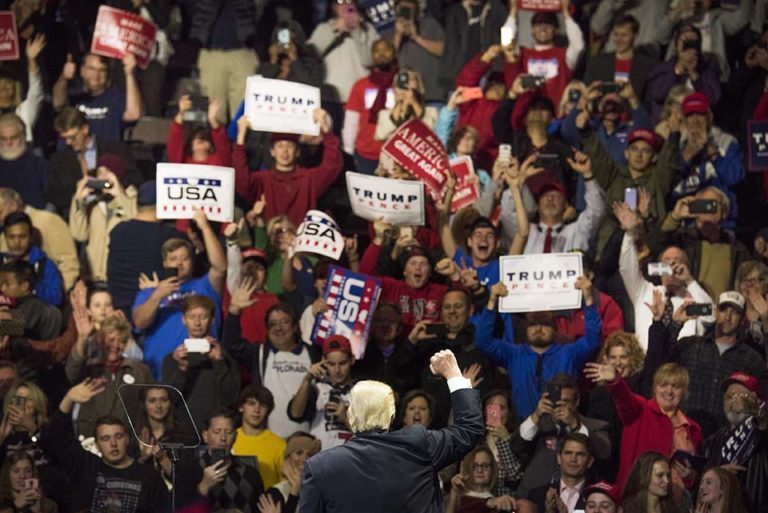Realizing “Peace Through Strength”
Transition45 Series

During this presidential transition, one word is practically tripping off the tongues of defense watchers: “rebuild.” President-elect Trump campaigned to make America’s military “so big, so powerful, so strong.” Yet few seem to be stopping to ask: Rebuild for what? Moreover, do we seek to “re” build or to build anew, in ways different than the past? Confusion over the president-elect’s foreign policy goals and how our defense toolkit will be used to help secure them hampers talk of a rebuild. The transition team and incoming administration should move quickly in three areas to explain and enable any such rebuild: making sound presidential appointments in defense, more fully articulating the president’s goals and the military’s role therein, and securing a budget deal for defense.
Issue
In reality, users of “rebuild” are generally talking not about the goals of the military but about its means—dollars and forces. Beyond a general assumption that this includes, at a minimum, growing the defense budget to a higher percent of GDP and building a larger force structure than that of today, there has been little detailed discussion about what we need to have, where we need to have it, and how we might use it. Such a discussion would have typically occurred on the presidential campaign trail, but 2016 was an unusual year, and much of the Trump defense agenda remains unknown.
More concerning, there is reason to believe that there is a fraying in the national consensus around these very questions. Polling from both the Pew Research Center and the Chicago Council on Global Affairs show strong and continuing support for American leadership in the world, but both also demonstrate growing uncertainty and divergences of opinion on the specifics of U.S. foreign policy strategy. One important person who is focused on the “rebuild for what” question is Chairman of the Joint Chiefs of Staff Joseph Dunford. Just last week, Dunford raised concerns similar to this author’s, stating, “we need a consensus on what we stand for, and then we can have a conversation about what we need to do that….Many times we’re involved in a discussion on how to do something before we agree on what it is we need to do.”

A beginning to the answer of what we seek to achieve in the world under a Trump Administration may have been provided in September by Donald Trump himself. Harking to George Washington and Ronald Reagan, he called for “peace through strength.” He described a centrist foreign policy platform, focused on “core national security interests, promoting regional stability, and producing an easing of tensions in the world.” We should “make new friends, rebuild old alliances, and bring new allies into the fold.” He argued that his foreign policy would emphasize “diplomacy, not destruction” and, while noting challenges from key nation states around the world, in particular urged gradual rather than radical change to US foreign policy in the Middle East. To achieve these ends, Donald Trump argued the need to grow military capability and spending: the strength that secures the peace.
But the themes of this speech were not entirely consistent with, and in some cases seem to contradict, other statements Trump has made. Further, the link from the ends laid out to the growth in military structure called for was not clearly articulated. There can be little debate that the objectives of the current U.S. defense strategy and the realities of ongoing operations are adequately resourced. They are not. What the size and shape of our armed forces should be, however, based on what we want to achieve in the world and how we plan to employ U.S. military forces, is less clear. It is this articulation that American taxpayers, the U.S. military, allies and partners, and potential aggressors need to understand if “peace through strength” is to succeed.
Recommended Changes
There are three changes that the Trump transition team should begin instituting now to significantly improve the nation’s ability to tie its defense means to its objectives, deter adversaries, and strengthen core interests.
Make Sound Presidential Appointments. One of the most important signals the president-elect can send about his future defense plans is the appointments he makes. In naming General Jim Mattis as his nominee for Secretary of Defense, Trump has cheered allies, partners, and a wide cross-section of the American defense establishment. Well known to all of those constituencies is Mattis’s dedication to the rule of law and civilian control, his positive history working closely with allies, coalition partners and U.S. civilian counterparts, his strategic sensibilities, his innovative warfighting spirit, and his integrity. The transition team should build on the goodwill this sound choice has created and ensure further defense and security nominations and appointments likewise validate the intent to pursue the agenda laid out in Trump’s September speech and draw the kind of professional regard that General Mattis has.
Articulate Desired National Ends and the Military’s Role in Achieving Them. Even before 20 January, the transition team should articulate as clearly as possible the general outlines of the president-elect’s strategy for national security. This includes his vision for the U.S. role in the world, the nation’s security interests, how it will seek to protect them, and in particular, the role of military forces. This need not be a full-throated strategy review—that can come later. Rather, it should provide the kind of broad strokes of the president-elect’s defense agenda that might have surfaced in prior, more policy-centric, election cycles. Doing so will better moor the defense community and its allies and partners around a sense of direction on national security, from goals to missions to military posture.

